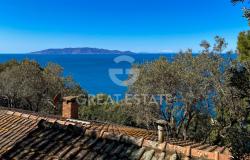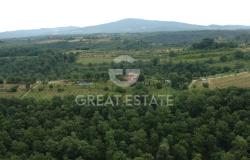The name Thomas Coryate is little known today, yet in the time of Shakespeare he was one of Jacobean England's most famous travellers and renowned eccentrics. Rubbing shoulders with the likes of playwright, Ben Johnson, and poet, John Donne, was not enough for this adventurer from the rural county of Somerset. His journey, on foot, from his home in Odcombe all the way to Northern Italy was to make him the toast of literary London. Loving his home, but keen to leave it in search of tales to inspire the wits of England's courtiers, he ended up with the nickname, Odd Tom.
 The book he wrote on his return, Coryate's Crudities, reflects his humour and attitudes, but also reveals a wonderfully evocative portrait of Italy in the early 1600s. Tom’s first footsteps on Italian soil took him down from the treacherous Mont Cenis Pass into Piedmont and the town of Novalesa. His route took him past the Abbey of San Michele in the Susa Valley where he was much taken with the building’s precarious position on the rocky outcrop of Mount Pirchiriano. The Sacra di San Michele was abandoned not long after Coryate’s journey, eventually being restored in the 1800s and still in use today.
The book he wrote on his return, Coryate's Crudities, reflects his humour and attitudes, but also reveals a wonderfully evocative portrait of Italy in the early 1600s. Tom’s first footsteps on Italian soil took him down from the treacherous Mont Cenis Pass into Piedmont and the town of Novalesa. His route took him past the Abbey of San Michele in the Susa Valley where he was much taken with the building’s precarious position on the rocky outcrop of Mount Pirchiriano. The Sacra di San Michele was abandoned not long after Coryate’s journey, eventually being restored in the 1800s and still in use today.
Tom was laid low in Turin with a virus which he blamed on the wine: ‘I found so great a distemperature in my body, by drinking the sweete wines of Piemont, that caused a grievous inflammation in my face and hands…’. His advice to fellow travellers was to water down the wine – a recommendation that, thankfully, few would follow in the land of Barolo and Barbaresco.
Although Tom continued his journey on foot, he was a keen observer of other forms of transport and mentions the navigability of the River Po all the way across to the Adriatic; a fact not lost on Shakespeare who has his characters sailing the inland waterways of Northern Italy. Coryate was to make his own small contributions to the English language. He was intrigued to see locals eating their meat and cheese with a curious implement known as a forchetta – something he had not seen before; an experience which lead him to be one of the earliest users of the term ‘fork’ to describe a tool for eating. Impressed with Italian table manners, he noted how the fork avoided the use of fingers which ‘will give occasion of offence unto the company, as having transgressed the lawes of good manners’. Passing into Lombardy, he was no less impressed with the leather ‘umbrellaes’ that ‘minister shadow unto them for shelter against the scorching heate of the Sunne.’ The term, and eventually the umbrella itself, became fashionable in England although, sadly, to shelter his countrymen from the incessant drizzle.

Milan gave Tom the opportunity to really wax lyrical. He climbed to the top of the cathedral tower – an activity the modern tourist can share – and was able to see a vast tract of the country laid before him. ‘The territory of Lombardy, which I contemplated round about from this tower, was so pleasant an object to mine eyes, being replenished with such unspeakable variety of all things, both for profit and pleasure, that it seemeth to me to be the very Elysian fields.’ To the modern eye, urban Milan takes up more of the view but nonetheless, a view that makes the climb worthwhile.
His gaze also fell on the society around him. At the time of his visit, the Duchy of Milan was under Spanish rule. Coming from the Citadel, the seat of their power, he was mistaken for a Flemish enemy and hastily escaped the anger of a particularly aggressive soldier. He couldn’t help but notice the animosity between the Milanese and Spaniards and remarked that the two stayed in their own districts, with the Spanish only venturing into the City for their pleasures after dark. Centuries later, the Italian classic by Manzoni, I promessi sposi (The Bethrothed), would hark back to this era.
By way of Cremona, Coryate continued on to Mantua where he loved the abundance of fruits and flowers surrounding the city and sold in the market place. There are still wonderful markets in Mantua, in particular around Piazzas Sordello and delle Erbe on a Thursday, with local produce very much present. In fact, Mantua so stole his heart that it was only his love of Odcombe that prevented him from spending the remainder of his days there, ‘in some divine Meditations amongst the sacred Muses’. He marvelled at the extravagancies of the Gonzagas, their palaces and public buildings constructed from solid stone at a time when most of London was still made of wood. His description of the Palazzo Te as ‘a most magnificent and stately worke’ is as apt today as it was in 1608.

Coryate is best known for his descriptions of Padua and Venice. Surprisingly, or perhaps not for our eccentric Tom, he neglected to visit Padua’s famous university, choosing instead the first botanical gardens in Europe, now a UNESCO World Heritage Site. It was here he discovered pistachios and plane trees. His view of the city was greatly enhanced by a local scholar, Paolo Emilio Musto, with whom he took great delight in exercising his Latin skills, but had to bow to Paolo’s considerable mastery of both Greek and Hebrew. Take a walk along Padua’s arcaded streets and you will truly get a feel for what Coryate experienced. The arcades, a real novelty to him, continue to protect strollers from the elements. The only downside he noted was the behaviour of certain students, a familiar lament to anyone who has lived in a university town.
Proceeding to Venice, he was overcome, as all tourists are, by its unique beauty. He marvelled at the houses built on wooden stakes: ‘they ramme in great piles of woodde, which they lay very deepe, upon the which they place their bricke or stone.’ However, it was the melting pot of St Mark’s Square that made him feel such a long way from his rural routes. ‘Here you may both see all manner of fashions of attire, and heare all the languages of Christendome…’ During his six week stay, he wandered the lesser canals which he likened to veins running through the body. One such trip took him to the Jewish Ghetto where his religious fervour led him to try and convert a Rabbi. Realising he had overstepped the mark and having attracted quite a crowd, he fled to the passing gondola of the British Ambassador.
Coryate christened Venice ‘the Virgin City’ because it had never been captured. It was a nickname he would later regret when he was habitually taken by gondoliers to the local houses of ill repute when his only intention had been to take a leisurely cruise along the side canals. Venice was famed for its courtesans and Tom was surprised that they were so tolerated. This was tempered when he was told that their taxes paid for numerous galleys in the illustrious Venetian navy. Nonetheless, Coryate’s accounts provided much opportunity for his friends to make fun of him once he had returned home. By way of research, and in contrast to other writers of the age, he decided he should describe the Venetian courtesan: ‘For her face is adorned with the quintessence of beauty. In her cheekes thou shalt see the Lilly and the Rose strive for supremacy…’
Reluctant to leave the dramatic architecture and vibrant life of this floating city, Tom was running low on funds and the goodwill of acquaintances. He also had a very long walk home. Back in Odcombe, he put pen to paper and one of the English language’s first true travel guides was born. It’s easy to imagine Tom in London’s literary tavern, The Mermaid, regaling the likes of Shakespeare with his tales from the peninsula and stirring the subsequent fashion for all things Italian, which would eventually give rise to the Grand Tour.
Coryate’s life ended prematurely. His restless feet took him to India where he died of the ‘flux’. His most fitting monument is neither in India or Italy, but in the local parish church of Odcombe: a replica of the shoes he had hung up after his long march back from Venice.









